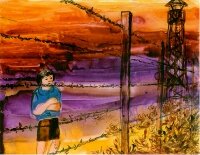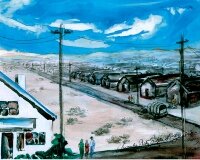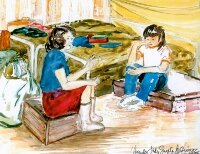 The U.S. Congress awarded the Congressional Gold Medal (CGM) to the U.S. Army’s 100th Infantry Battalion, the 442nd Regimental Combat Team (RCT) and the Military Intelligence Service (MIS) for their extraordinary accomplishments in World War II.On February 23, 2012, the Japanese American Museum of San Jose (JAMsj), the San Jose Chapter of the Japanese American Citizens League (JACL), the Friends and Families of Nisei Veterans (FFNV), local VFW Post 9970, and the San Jose Buddhist Church Betsuin, in conjunction with Representatives Zoe Lofgren, Mike Honda, and Anna Eshoo, held a local ceremony honoring the veterans and their families in San Jose, California.A Congressional Gold Medal is an award bestowed by the United States Congress and is, along with the Presidential Medal of Freedom, the highest civilian award in the United States. The decoration is awarded to an individual who performs an outstanding deed or act of service to the security, prosperity, and national interest of the United States.Clear here to view images from the San Jose Congressional Gold Medal event.
The U.S. Congress awarded the Congressional Gold Medal (CGM) to the U.S. Army’s 100th Infantry Battalion, the 442nd Regimental Combat Team (RCT) and the Military Intelligence Service (MIS) for their extraordinary accomplishments in World War II.On February 23, 2012, the Japanese American Museum of San Jose (JAMsj), the San Jose Chapter of the Japanese American Citizens League (JACL), the Friends and Families of Nisei Veterans (FFNV), local VFW Post 9970, and the San Jose Buddhist Church Betsuin, in conjunction with Representatives Zoe Lofgren, Mike Honda, and Anna Eshoo, held a local ceremony honoring the veterans and their families in San Jose, California.A Congressional Gold Medal is an award bestowed by the United States Congress and is, along with the Presidential Medal of Freedom, the highest civilian award in the United States. The decoration is awarded to an individual who performs an outstanding deed or act of service to the security, prosperity, and national interest of the United States.Clear here to view images from the San Jose Congressional Gold Medal event.
Echoes of Executive Order 9066
By Will KakuOn February 19, 2012, members of the San Jose community will commemorate the 70th anniversary of the signing of Executive Order 9066 at the 32nd Annual San Jose Day of Remembrance event. The executive order eventually led to the mass incarceration of Japanese Americans during World War II. The San Jose Day of Remembrance program, entitled “Civil Liberties Under Siege,” brings different communities together to remember the signing of the executive order -- which many people now acknowledge to be a great civil liberties tragedy – and attendees are encouraged to reflect on what that historical event means to their lives today.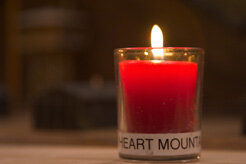
Many people, especially within the Japanese American community, feel that important lessons can be extracted from the incarceration of Japanese Americans and that those lessons are pertinent to the issues of today.
Last week, President Obama signed the 2012 National Defense Authorization Act (NDAA), which has a provision that allows for the indefinite detention of U.S. citizens without trial. Civil liberties groups, human rights advocates, and members of the Japanese American community have vehemently protested the signing of this bill. Congressman Mike Honda (D-CA), a former internee from Camp Amache and a frequent speaker at the San Jose Day of Remembrance event, voted against the NDAA and said that the bill did not have sufficient changes “to ensure the Constitutional rights of every U.S. citizen. For these reasons, I voted against the FY12 National Defense Authorization Act.”
Susan Hayase, a Nihonmachi Outreach Committee (NOC) chairperson during the redress movement and vice chairperson of the Civil Liberties Public Education Fund, commented about the dangers of the provision and drew parallels with internment. “Due process is something that my family holds precious,” Hayase said. “My entire family was detained indefinitely without charges, without a chance to defend themselves in court after being declared ‘enemy non-aliens’ by the U.S. government. We suffered deeply for this, but our American Constitution suffered even more.” Floyd Mori, national executive director of the Japanese American Citizens League (JACL), wrote about his concerns over the Senate bill in an op-ed for the San Jose Mercury News. Mori claimed that the bill “raises the question of whether the Senate has forgotten our history.” Mori wrote, “Although the details of the indefinite detentions of Japanese Americans during World War II and the proposed indefinite detentions of terrorism suspects may differ, the principle remains the same: indefinite detentions based on fear-driven and unlawfully substantiated national security grounds, where individuals are neither duly charged nor fairly tried, violate the essence of U.S. law and the most fundamental values upon which this country was built."In the legal arena, the significance of Japanese internment has risen in a post-9/11 world. In an article for the Kansas Law Review (“Raising the Red Flag: The Continued Relevance of the Japanese Internment in the Post-Hamdi World”), University of Colorado Law School professor Aya Gruber, a daughter of a former internee, wrote that the “reminders of the horrors of internment remain highly relevant, as the United States continues to engage regularly in armed conflict and detain thousands of people without regard to constitutional safeguards or criminal process.” She concludes that, “Defenders of civil liberties must therefore continue to raise the red flag, be vigilant about government overreaching, and passionately invoke the caution of the internment.”
Floyd Mori, national executive director of the Japanese American Citizens League (JACL), wrote about his concerns over the Senate bill in an op-ed for the San Jose Mercury News. Mori claimed that the bill “raises the question of whether the Senate has forgotten our history.” Mori wrote, “Although the details of the indefinite detentions of Japanese Americans during World War II and the proposed indefinite detentions of terrorism suspects may differ, the principle remains the same: indefinite detentions based on fear-driven and unlawfully substantiated national security grounds, where individuals are neither duly charged nor fairly tried, violate the essence of U.S. law and the most fundamental values upon which this country was built."In the legal arena, the significance of Japanese internment has risen in a post-9/11 world. In an article for the Kansas Law Review (“Raising the Red Flag: The Continued Relevance of the Japanese Internment in the Post-Hamdi World”), University of Colorado Law School professor Aya Gruber, a daughter of a former internee, wrote that the “reminders of the horrors of internment remain highly relevant, as the United States continues to engage regularly in armed conflict and detain thousands of people without regard to constitutional safeguards or criminal process.” She concludes that, “Defenders of civil liberties must therefore continue to raise the red flag, be vigilant about government overreaching, and passionately invoke the caution of the internment.” In the post-9/11 world, the Japanese American community has also been one of the most ardent supporters of embattled Muslim Americans. Last March, House Homeland Security Committee Chairman Peter T. King (R-N.Y.) launched controversial hearings on radical Islam in the United States. Congressman Honda stated in an op-ed for the San Francisco Chronicle, “Hundreds of thousands of innocent Japanese Americans were unjustly placed under scrutiny and suspicion because few in Washington were brave enough to say ‘no’.” Honda claimed that, “Representative King’s intent seems clear: To cast suspicion upon all Muslim Americans and to stoke the fires of anti-Muslim prejudice and Islamophobia.”
In the post-9/11 world, the Japanese American community has also been one of the most ardent supporters of embattled Muslim Americans. Last March, House Homeland Security Committee Chairman Peter T. King (R-N.Y.) launched controversial hearings on radical Islam in the United States. Congressman Honda stated in an op-ed for the San Francisco Chronicle, “Hundreds of thousands of innocent Japanese Americans were unjustly placed under scrutiny and suspicion because few in Washington were brave enough to say ‘no’.” Honda claimed that, “Representative King’s intent seems clear: To cast suspicion upon all Muslim Americans and to stoke the fires of anti-Muslim prejudice and Islamophobia.” Several months before the congressional hearings, the plans to build an Islamic center near the site of the World Trade Center – which some people called the “mosque near ground-zero” -- stirred many powerful emotions on both sides of the heated debate. Within the Japanese American community, there were many visible signs of support for the center and for the Muslim American community. The JACL compared the current debate to the fiery controversy surrounding the establishment of a New York City hostel that housed Japanese Americans who were trying to resettle after leaving internment camps. The JACL stated that, “In the face of war and the tragedy of September 11, it is too easy to place blame on others and allow intolerance to prevail. We must do better than to leave Muslim Americans with the impression that intolerance has no definite end. We must begin by not reinterpreting our emotions over September 11 but instead by affirming the ideals that have defined our democracy.”There are also echoes of internment in other areas that concern civil rights and discrimination. Some people have called the fight for lesbian, gay, bisexual, and transgender (LGBT) equality the next great civil rights battle of this decade. Many legal observers have claimed that California’s battle over Proposition 8 will soon be headed to the United States Supreme Court. Japanese American individuals and organizations, such as the National JACL, Nikkei for Civil Rights and Redress (NCRR), and San Jose’s NOC, have strongly endorsed marriage equality and have made direct comparisons to past discriminatory laws directed toward Japanese Americans. Actor and activist, George Takei, drew personal comparisons with this act of discrimination to his own incarceration in an internment camp in a 2006 interview with Scott Simon on National Public Radio. Takei said, “I went to school in a black tar-paper barrack (as a child in internment camps) and began the day seeing the barbed-wire fence. Thank God those barbed-wire fences are now long gone for Japanese Americans. But I still see an invisible, legalistic barbed-wire that keeps me, my partner of 19 years, Brad Altman, and another group of Americans separated from a normal life.”Over the last several years, references to Japanese American internment and discrimination have recently made their way into many diverse issues such as airport racial profiling, the USA Patriot Act, the Habeas Corpus Restoration Act, the National Security Entry-Exit Registration System, the Federal Intelligence Security Act, presidential wartime powers, and even the Texas Board of Education textbook controversy. It is not surprising since the trauma of internment has indelibly shaped the values, attitudes, and political beliefs of many within the Japanese American community.-------------------------------------------------------------------------------------------------------------------Each year, the Nihonmachi Outreach Committee (NOC) hosts the San Jose Day of Remembrance event. The San Jose Day of Remembrance event will be held from 5:30 p.m to 7:30 p.m, on February 19, 2012, at the San Jose Buddhist Church Betsuin, located at 640 N. Fifth Street, San Jose, California. For more information, visit www.sjnoc.org.
Several months before the congressional hearings, the plans to build an Islamic center near the site of the World Trade Center – which some people called the “mosque near ground-zero” -- stirred many powerful emotions on both sides of the heated debate. Within the Japanese American community, there were many visible signs of support for the center and for the Muslim American community. The JACL compared the current debate to the fiery controversy surrounding the establishment of a New York City hostel that housed Japanese Americans who were trying to resettle after leaving internment camps. The JACL stated that, “In the face of war and the tragedy of September 11, it is too easy to place blame on others and allow intolerance to prevail. We must do better than to leave Muslim Americans with the impression that intolerance has no definite end. We must begin by not reinterpreting our emotions over September 11 but instead by affirming the ideals that have defined our democracy.”There are also echoes of internment in other areas that concern civil rights and discrimination. Some people have called the fight for lesbian, gay, bisexual, and transgender (LGBT) equality the next great civil rights battle of this decade. Many legal observers have claimed that California’s battle over Proposition 8 will soon be headed to the United States Supreme Court. Japanese American individuals and organizations, such as the National JACL, Nikkei for Civil Rights and Redress (NCRR), and San Jose’s NOC, have strongly endorsed marriage equality and have made direct comparisons to past discriminatory laws directed toward Japanese Americans. Actor and activist, George Takei, drew personal comparisons with this act of discrimination to his own incarceration in an internment camp in a 2006 interview with Scott Simon on National Public Radio. Takei said, “I went to school in a black tar-paper barrack (as a child in internment camps) and began the day seeing the barbed-wire fence. Thank God those barbed-wire fences are now long gone for Japanese Americans. But I still see an invisible, legalistic barbed-wire that keeps me, my partner of 19 years, Brad Altman, and another group of Americans separated from a normal life.”Over the last several years, references to Japanese American internment and discrimination have recently made their way into many diverse issues such as airport racial profiling, the USA Patriot Act, the Habeas Corpus Restoration Act, the National Security Entry-Exit Registration System, the Federal Intelligence Security Act, presidential wartime powers, and even the Texas Board of Education textbook controversy. It is not surprising since the trauma of internment has indelibly shaped the values, attitudes, and political beliefs of many within the Japanese American community.-------------------------------------------------------------------------------------------------------------------Each year, the Nihonmachi Outreach Committee (NOC) hosts the San Jose Day of Remembrance event. The San Jose Day of Remembrance event will be held from 5:30 p.m to 7:30 p.m, on February 19, 2012, at the San Jose Buddhist Church Betsuin, located at 640 N. Fifth Street, San Jose, California. For more information, visit www.sjnoc.org.
The Emotional Journey into Camp Days
The following article was written by JAMsj docent, Will Kaku. He reflects on the Chizuko Judy Sugita de Queiroz’ Camp Days 1942-1945 exhibit. The exhibit will be closing on December 30, 2011.
The Emotional Journey into Camp Days
By Will Kaku
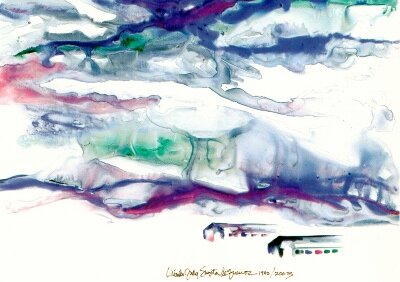 When the JAMsj reopened in October 2010, I used to start my tours like many docents do: in chronological order starting with the story of Chinese and Japanese immigration, the insatiable appetite for cheap labor by agribusiness and industrialists, the impact of racial attitudes and anti-Asian exclusionary laws, and the transition of an immigrant population from a “bachelor society” to one of permanence in San Jose’s Japantown. To me, to start from the beginning was the only way to tell this story.That is how many of us learned history in school. We were often immersed in historical timelines, the identification of key events, influential innovations, political leaders and movements, and the study of causality. There were many facts that had to be understood, necessitating a firm grasp on the “who, what, why, when, and where” of history.When it came to Chizuko Judy Sugita de Quieroz’ watercolor art exhibit, Camp Days 1942-1945, it just didn’t seem to fit my linearly constructed, fact-driven narrative. I often concluded my tours informing my tour group that we also had an art exhibit room which they could walk through and enjoy at their own leisure.I just didn’t get it. I simply saw that there were brightly colored images on the exhibit walls that depicted slices of camp life. There didn’t seem to be any sense of connectivity and profundity, and it missed the opportunity to make an overt political statement. There were also several paintings done in a child-like manner. I could probably paint better than that, I thought.During my breaks, I used to sit and relax in the Camp Days exhibit room, enjoying quiet, introspective times. Letting my mind wander into Chizuko’s paintings, I would reflect on the many former internees that I had met. And eventually, I started to understand.Sometimes the appreciation of art is like that. Like a fine wine, you often can’t appreciate it until you are fully aware of its subtle complexity. You cannot viscerally connect to the work until you are able to unlock the deeply embedded emotional layers. Chizuko’s exhibit describes a young girl’s journey into womanhood and reveals a deeply personal, emotionally scarring reaction to internment, a reaction that many former internees can identify with. For many in the Japanese American community, the repercussions of internment define who we are, shaping our values, political beliefs, and emotional character.In Chizuko’s work, there are basically two major styles represented in the exhibit: a representational form and an abstract form that embeds impressionistic components. Many of the representational forms are painted in a child-like manner, although it would be more accurate to say that they are painted through the eyes of a young Chizuko and layered with the knowledge of what was yet to come from the adult Chizuko.Chizuko had the most difficult time trying to create the abstract forms. Many of these paintings are heavily textured with deep emotions that include sorrow, loneliness, loss, and longing.
When the JAMsj reopened in October 2010, I used to start my tours like many docents do: in chronological order starting with the story of Chinese and Japanese immigration, the insatiable appetite for cheap labor by agribusiness and industrialists, the impact of racial attitudes and anti-Asian exclusionary laws, and the transition of an immigrant population from a “bachelor society” to one of permanence in San Jose’s Japantown. To me, to start from the beginning was the only way to tell this story.That is how many of us learned history in school. We were often immersed in historical timelines, the identification of key events, influential innovations, political leaders and movements, and the study of causality. There were many facts that had to be understood, necessitating a firm grasp on the “who, what, why, when, and where” of history.When it came to Chizuko Judy Sugita de Quieroz’ watercolor art exhibit, Camp Days 1942-1945, it just didn’t seem to fit my linearly constructed, fact-driven narrative. I often concluded my tours informing my tour group that we also had an art exhibit room which they could walk through and enjoy at their own leisure.I just didn’t get it. I simply saw that there were brightly colored images on the exhibit walls that depicted slices of camp life. There didn’t seem to be any sense of connectivity and profundity, and it missed the opportunity to make an overt political statement. There were also several paintings done in a child-like manner. I could probably paint better than that, I thought.During my breaks, I used to sit and relax in the Camp Days exhibit room, enjoying quiet, introspective times. Letting my mind wander into Chizuko’s paintings, I would reflect on the many former internees that I had met. And eventually, I started to understand.Sometimes the appreciation of art is like that. Like a fine wine, you often can’t appreciate it until you are fully aware of its subtle complexity. You cannot viscerally connect to the work until you are able to unlock the deeply embedded emotional layers. Chizuko’s exhibit describes a young girl’s journey into womanhood and reveals a deeply personal, emotionally scarring reaction to internment, a reaction that many former internees can identify with. For many in the Japanese American community, the repercussions of internment define who we are, shaping our values, political beliefs, and emotional character.In Chizuko’s work, there are basically two major styles represented in the exhibit: a representational form and an abstract form that embeds impressionistic components. Many of the representational forms are painted in a child-like manner, although it would be more accurate to say that they are painted through the eyes of a young Chizuko and layered with the knowledge of what was yet to come from the adult Chizuko.Chizuko had the most difficult time trying to create the abstract forms. Many of these paintings are heavily textured with deep emotions that include sorrow, loneliness, loss, and longing.
Uncertain Future depicts Chizuko’s family looking far off into the distance, contemplating what their future holds for them when they are finally released from the camp. Many people had great difficulty trying to recover their lives, and some encountered hostile reactions from their former communities. I once met Miyo Uzaki, a former internee, who told me that when she returned to her church in the Fresno area after the war, the pastor of her church informed her that he and the congregation did not want her family to return to the church. JAMsj curator, Jimi Yamaichi, remembered, “When we tried to move into our new home, the neighbors took a vote. We barely got in on a vote of 7 to 6.”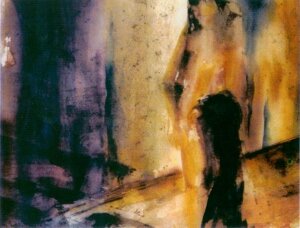 Unanswered Prayers covers several major themes that flow throughout Camp Days. In camp, young Chizuko is told that, “If you pray hard enough, your prayers will come true.” Chizuko remarks, “Camp made me realize that my prayers would never be answered. I knew my mother would never come back to life, and I would never be a blue-eyed blond.” This idealized longing for a mother she never knew —she passed away when Chizuko was a baby – is captured in other images in the exhibit. Chizuko states, “Being motherless in camp had a detrimental impact on my childhood. I didn't have anyone. If I had a mother, I'm sure that she would have protected me and taken me every place with her. I wouldn't have had any traumatic experiences”“That painting is an abstract of me,” Chizuko told me. “I’m coming out of the cement shower room, so uncomfortable, sad, and depressed.” The naked body of Chizuko suggests great vulnerability, loneliness, and insecurity. Without her mother, the young Chizuko was becoming increasingly insecure about her body as she moved toward puberty. The lack of privacy in camp also made her feel extremely uncomfortable. Chizuko explained, “I was always embarrassed to shower with a lot of naked women.” In one painting, It’s Not Polite to Stare, she was told that she couldn’t play with her classmates because she had no mother and that she was rude because she stared at another woman in the shower.Her prayer to be non-Japanese in appearance obviously means that she would not have to be in camp if she were a “blue-eyed blond.” But, the wish also carries a deeper implication in the rejection of one’s self. Many of us who grew up in an exclusively Caucasian environment -- in a time when no Asian faces were represented on TV, in films , toys, commercials or magazines -- have harbored similar feelings of “wanting to be white” or a disdain and rejection of everything that was Japanese within ourselves.Other paintings in the exhibit convey similar themes. A Good American, Black and White Houses, Discovery and Disillusionment, and No Japs Allowed, reinforce her feeling of being a “bad person” and reveal her painful reaction to ostracism and discrimination.
Unanswered Prayers covers several major themes that flow throughout Camp Days. In camp, young Chizuko is told that, “If you pray hard enough, your prayers will come true.” Chizuko remarks, “Camp made me realize that my prayers would never be answered. I knew my mother would never come back to life, and I would never be a blue-eyed blond.” This idealized longing for a mother she never knew —she passed away when Chizuko was a baby – is captured in other images in the exhibit. Chizuko states, “Being motherless in camp had a detrimental impact on my childhood. I didn't have anyone. If I had a mother, I'm sure that she would have protected me and taken me every place with her. I wouldn't have had any traumatic experiences”“That painting is an abstract of me,” Chizuko told me. “I’m coming out of the cement shower room, so uncomfortable, sad, and depressed.” The naked body of Chizuko suggests great vulnerability, loneliness, and insecurity. Without her mother, the young Chizuko was becoming increasingly insecure about her body as she moved toward puberty. The lack of privacy in camp also made her feel extremely uncomfortable. Chizuko explained, “I was always embarrassed to shower with a lot of naked women.” In one painting, It’s Not Polite to Stare, she was told that she couldn’t play with her classmates because she had no mother and that she was rude because she stared at another woman in the shower.Her prayer to be non-Japanese in appearance obviously means that she would not have to be in camp if she were a “blue-eyed blond.” But, the wish also carries a deeper implication in the rejection of one’s self. Many of us who grew up in an exclusively Caucasian environment -- in a time when no Asian faces were represented on TV, in films , toys, commercials or magazines -- have harbored similar feelings of “wanting to be white” or a disdain and rejection of everything that was Japanese within ourselves.Other paintings in the exhibit convey similar themes. A Good American, Black and White Houses, Discovery and Disillusionment, and No Japs Allowed, reinforce her feeling of being a “bad person” and reveal her painful reaction to ostracism and discrimination.
When Chizuko speaks about Camp Days, it often leads to tears. Many of her emotions have been bottled up and suppressed over the years. Chizuko suffered great loneliness in camp. Her older siblings told her to just deal with her situation, saying “You’re not a baby anymore.” Much later in life, when she would bring up the topic of camp or her mother, “My brothers and sisters would just say that I just cried and whined all the time and that would end the conversation,” Chizuko explained.Chizuko now says that producing this exhibit was a cathartic experience for her. She normally paints outdoors, but when she painted Camp Days, she isolated herself in a room, revisiting many of the painful memories. All of the emotions that had been previously submerged and invalidated by others could no longer be held back. “I did a lot of gnashing of teeth, crying, laughing, while just remembering more and more details,” Chizuko recalled.The personal, emotional reaction to historical events is one that many people can identify with. During the hearings on redress in the 1980s, many people remember the sudden outpouring of long-held emotions. The emotional repercussions of internment define who many of us are as individuals and as a community. Armed with this deeper knowledge of Camp Days, the life of Chizuko Judy Sugita de Queiroz, and stories from many of the former internees that I have met, I now start rather than end my tours in the Camp Days exhibit. I am very thankful to have taken this emotional journey with Chizuko into Camp Days. This journey will remain with me for a long time.
To get more information from the artist, visit www.artbychiz.com.------------------------------------------------------------------------------------------------------------------------
Yesterday's Farmer: Eiichi Edward Sakauye (1912-2005)
By Joe Yasutake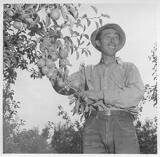 I first got to know Eiichi when I spent several days with him while preparing for an extensive interview with him that was to be a part of a video history project. Our friendship blossomed when, at age 90, he decided that his night vision was not good enough to drive after dark. This decision resulted in my routinely picking him up to attend JAMsj board meetings and other evening events. During this period, I had the privilege of listening to many stories about his fascinating life--from his childhood, his days in internment camp, and his subsequent involvement in many community-related activities. As he told these stories, his passion for life, his strong sense of history, and his vision for the future of JAMsj was crystal clear.Eiichi Sakauye was born in San Jose, California, on January 25, 1912, the eldest of seven children. He grew up on the farm that his father, Yuwakichi, purchased in 1907, prior to the Alien Land Law of 1913. Eiichi spent his entire life on that farm except his 1942-1945 incarceration at Heart Mountain, Wyoming, internment camp.
I first got to know Eiichi when I spent several days with him while preparing for an extensive interview with him that was to be a part of a video history project. Our friendship blossomed when, at age 90, he decided that his night vision was not good enough to drive after dark. This decision resulted in my routinely picking him up to attend JAMsj board meetings and other evening events. During this period, I had the privilege of listening to many stories about his fascinating life--from his childhood, his days in internment camp, and his subsequent involvement in many community-related activities. As he told these stories, his passion for life, his strong sense of history, and his vision for the future of JAMsj was crystal clear.Eiichi Sakauye was born in San Jose, California, on January 25, 1912, the eldest of seven children. He grew up on the farm that his father, Yuwakichi, purchased in 1907, prior to the Alien Land Law of 1913. Eiichi spent his entire life on that farm except his 1942-1945 incarceration at Heart Mountain, Wyoming, internment camp. Despite the busy times, he learned much about farming, business transactions, and interacting with others. Eiichi also demonstrated great ingenuity and resourcefulness during this early period on the farm. When he and his brother could not get anyone to construct a pear-sorting machine, they had the necessary parts fabricated and assembled the machine themselves.At the outbreak of WWII, Eiichi was 29 years old, a seasoned farmer, an employer, and a community leader. He recalled the shock of Pearl Harbor and the subsequent flurry of activity preparing to leave the farm for some unknown destination. Neighbors and friends who did not own their own homes were allowed to store their belongings on Eiichi’s property during the internment.Eiichi developed a special relationship with one particular neighbor, Edward Seely. When Eiichi's family was evacuated, Edward volunteered to look after the Sakauye farm. Ironically, Eiichi’s family had looked after the Seely’s farm, as well as his invalid mother, while Edward served in the military during WWI. When Eiichi returned from camp after four years, everything was just as he had left it, thanks to the Seelys’ protective guardianship. Eiichi paid tribute to Edward Seely long after his friend's death by placing flowers on Edward's grave every week.
Despite the busy times, he learned much about farming, business transactions, and interacting with others. Eiichi also demonstrated great ingenuity and resourcefulness during this early period on the farm. When he and his brother could not get anyone to construct a pear-sorting machine, they had the necessary parts fabricated and assembled the machine themselves.At the outbreak of WWII, Eiichi was 29 years old, a seasoned farmer, an employer, and a community leader. He recalled the shock of Pearl Harbor and the subsequent flurry of activity preparing to leave the farm for some unknown destination. Neighbors and friends who did not own their own homes were allowed to store their belongings on Eiichi’s property during the internment.Eiichi developed a special relationship with one particular neighbor, Edward Seely. When Eiichi's family was evacuated, Edward volunteered to look after the Sakauye farm. Ironically, Eiichi’s family had looked after the Seely’s farm, as well as his invalid mother, while Edward served in the military during WWI. When Eiichi returned from camp after four years, everything was just as he had left it, thanks to the Seelys’ protective guardianship. Eiichi paid tribute to Edward Seely long after his friend's death by placing flowers on Edward's grave every week. Eiichi held several jobs in Heart Mountain, including block manager and activities coordinator. In addition, because of his extended farming background, Eiichi was assigned to be the assistant superintendent of agriculture. He recognized the severity of the weather conditions in Wyoming, including the short growing season, scarcity of water, and lack of nutrients in the soil.He recruited fellow internee farmers and others who had knowledge about soil engineering, irrigation, fertilizer, seeds, and other specialties to determine what kind of farming made sense in the barren surroundings. After many brainstorming sessions, they settled on the best approach and established a flourishing farm system that produced a wide variety of produce. An example of their labors was, daikon (Japanese turnip), foreign to Wyoming.
Eiichi held several jobs in Heart Mountain, including block manager and activities coordinator. In addition, because of his extended farming background, Eiichi was assigned to be the assistant superintendent of agriculture. He recognized the severity of the weather conditions in Wyoming, including the short growing season, scarcity of water, and lack of nutrients in the soil.He recruited fellow internee farmers and others who had knowledge about soil engineering, irrigation, fertilizer, seeds, and other specialties to determine what kind of farming made sense in the barren surroundings. After many brainstorming sessions, they settled on the best approach and established a flourishing farm system that produced a wide variety of produce. An example of their labors was, daikon (Japanese turnip), foreign to Wyoming. After the war, Eiichi returned to his San Jose farm. Similar to the story of Ulysses returning home, Eiichi recalled that his dog, left behind during the long incarceration, still recognized him. At first, the dog approached him cautiously and with a growl, then broke into a run, wagging his tail madly, so happy was he to see his owner again.After his return to San Jose, Eiichi was sought by many organizations. His passion for history, love of education and his sense of civic responsibility got him involved with many organizations: the Santa Clara Historical Commission, San Jose Museum of Art, Preservation Action Council, Milpitas Historical Museum, Jefferson School Board, Santa Clara Unified School District Board, Agricultural Commission, and Valley Water District.His ethnic pride moved him to become a founding member of the Loyalty League of Sa
After the war, Eiichi returned to his San Jose farm. Similar to the story of Ulysses returning home, Eiichi recalled that his dog, left behind during the long incarceration, still recognized him. At first, the dog approached him cautiously and with a growl, then broke into a run, wagging his tail madly, so happy was he to see his owner again.After his return to San Jose, Eiichi was sought by many organizations. His passion for history, love of education and his sense of civic responsibility got him involved with many organizations: the Santa Clara Historical Commission, San Jose Museum of Art, Preservation Action Council, Milpitas Historical Museum, Jefferson School Board, Santa Clara Unified School District Board, Agricultural Commission, and Valley Water District.His ethnic pride moved him to become a founding member of the Loyalty League of Sa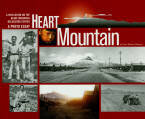 n Jose, now known as the Japanese American Citizens League (JACL),as well as a strong supporter of both the Yu-Ai Kai Senior Center and the Japanese American National Museum (JANM). Using his private collection of photos and movies, as well as relying on his vivid memories, Eiichi authored a seminal book, Heart Mountain: A Photo Essay. Eiichi and others founded the Japanese American Resource Center (JARC) in 1987. JARC’s goal was to preserve this area's Japanese American history so subsequent generations of Sansei and Yonsei could learn from and take pride in their heritage. In the early 1990s, JARC was housed in the Issei Memorial Building. But Eiichi saw the need for a larger venue to display photos, stories, and artifacts.One of Eiichi’s friends was Dr. Tokio Ishikawa, noted physician and Japantown historian. When Dr. Ishikawa moved, his North Fifth Street residence became available for sale. Eiichi discussed purchasing the property to become a JARC museum with Dr. Ishikawa, who was delighted with the idea of his home becoming a community resource.With the purchase completed in 1998, Eiichi generously donated the property to JARC, allowing it to become the new home for the museum. JARC subsequently changed its name to the Japanese American Museum of San Jose (JAMsj). Clearly, without Eiichi’s vision, foresight, leadership, and strong financial support, JAMsj would not be where it is today.---------------------------------------------------------------------------------------------------------
n Jose, now known as the Japanese American Citizens League (JACL),as well as a strong supporter of both the Yu-Ai Kai Senior Center and the Japanese American National Museum (JANM). Using his private collection of photos and movies, as well as relying on his vivid memories, Eiichi authored a seminal book, Heart Mountain: A Photo Essay. Eiichi and others founded the Japanese American Resource Center (JARC) in 1987. JARC’s goal was to preserve this area's Japanese American history so subsequent generations of Sansei and Yonsei could learn from and take pride in their heritage. In the early 1990s, JARC was housed in the Issei Memorial Building. But Eiichi saw the need for a larger venue to display photos, stories, and artifacts.One of Eiichi’s friends was Dr. Tokio Ishikawa, noted physician and Japantown historian. When Dr. Ishikawa moved, his North Fifth Street residence became available for sale. Eiichi discussed purchasing the property to become a JARC museum with Dr. Ishikawa, who was delighted with the idea of his home becoming a community resource.With the purchase completed in 1998, Eiichi generously donated the property to JARC, allowing it to become the new home for the museum. JARC subsequently changed its name to the Japanese American Museum of San Jose (JAMsj). Clearly, without Eiichi’s vision, foresight, leadership, and strong financial support, JAMsj would not be where it is today.---------------------------------------------------------------------------------------------------------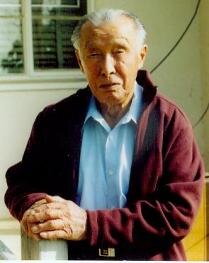 After World War II, Eiichi Sakauye married Susuye Wakano. They had two daughters, Carolyn and Jane. After Susuye’s passing, Eiichi married Marie Kawasak, who still resides on the farm. The Sakauye Family farm is one of the few farms still operating in Silicon Valley.
After World War II, Eiichi Sakauye married Susuye Wakano. They had two daughters, Carolyn and Jane. After Susuye’s passing, Eiichi married Marie Kawasak, who still resides on the farm. The Sakauye Family farm is one of the few farms still operating in Silicon Valley.
Congressional Gold Medal Event in San Jose
 The House of Representatives and the U.S. Senate, congressional leaders have agreed to award the Congressional Gold Medal (CGM) to the U.S. Army’s 100th Infantry Battalion, the 442nd Regimental Combat Team (RCT) and the Military Intelligence Service (MIS) for their extraordinary accomplishments in World War II. The National Veterans Network has been designated as the entity that will plan and execute the Congressional Gold Medal ceremony and events in the Fall of 2011 in Washington, D.C.The Japanese American Museum of San Jose, in conjunction with Representatives Zoe Lofgren, Mike Honda, and Anna Eshoo, are planning a local ceremony in San Jose, CA. This event will be for veterans and their families, as well as widows or families of veterans, who are unable to attend the ceremony in Washington, D.C. The local event is being planned for February 23, 20012. Unfortunately, because of high demand for this event, event registration is now closed.Q. Who qualifies for this award?Public Law 111-254 states that the CGM is to be awarded to veterans of the 100th, 442nd, as well as Japanese Americans who served in the MIS during World War II. The Department of Defense defines the period of WW II to be December 7, 1941 to December 31, 1946. In addition, the following are qualified to receive the award:
The House of Representatives and the U.S. Senate, congressional leaders have agreed to award the Congressional Gold Medal (CGM) to the U.S. Army’s 100th Infantry Battalion, the 442nd Regimental Combat Team (RCT) and the Military Intelligence Service (MIS) for their extraordinary accomplishments in World War II. The National Veterans Network has been designated as the entity that will plan and execute the Congressional Gold Medal ceremony and events in the Fall of 2011 in Washington, D.C.The Japanese American Museum of San Jose, in conjunction with Representatives Zoe Lofgren, Mike Honda, and Anna Eshoo, are planning a local ceremony in San Jose, CA. This event will be for veterans and their families, as well as widows or families of veterans, who are unable to attend the ceremony in Washington, D.C. The local event is being planned for February 23, 20012. Unfortunately, because of high demand for this event, event registration is now closed.Q. Who qualifies for this award?Public Law 111-254 states that the CGM is to be awarded to veterans of the 100th, 442nd, as well as Japanese Americans who served in the MIS during World War II. The Department of Defense defines the period of WW II to be December 7, 1941 to December 31, 1946. In addition, the following are qualified to receive the award:
- Caucasian and other non-ethnic Japanese, e.g. Korean and Hawaiian Americans, assigned to the 100th Battalion, 442nd RCT, including cadre who were ordered to remain at Camp Shelby to train replacements.
- Caucasians assigned as team leaders of Nisei linguists.
- Students at MIS or other U.S. Army language schools.
- Any Japanese American assigned as a linguist in the Occupation of Japan during World War II (August 15, 1945 to December 31, 1946).
Q. What is the Congressional Gold Medal?This medal is an award bestowed by Congress and is the highest civilian award in the United States. The decoration is awarded to an individual or unit who performs an outstanding deed or act of service to the security, prosperity and national interest of the United States. The first recipient of the medal was George Washington in 1776. Among the 145 individuals and units awarded the medal were the Tuskegee Airmen, the Navajo Code Talkers, Thomas Edison and the Wright Brothers.Q. How does a qualified local veteran obtain a Congressional Gold Medal replica?Thanks to generous sponsors, all veterans, widows or next of kin of veterans registered to attend the event in San Jose, CA will be presented with a three-inch bronze CGM replica at no cost. One replica will be given per family who attend the event.For those who wish to purchase a replica, the U.S. Mint has the 3" bronze replica available for online purchase at http://www.usmint.gov/ for $44.95 and $8 for a presentation case.
Film Screening: Sharing and Celebrating Stories from Nisei Honorary Degree Recipients
By Colleen Bentley, California State University Director of Special Projects Nearly 70 years after Executive Order 9066 forced 250 California State University students to leave their campuses without completing their degrees, several former students’ stories will be brought to light on Thursday, October 27, 2011, with the screening of the video The California State University: Sharing and Celebrating Stories from Nisei Honorary Degree Recipients at the Japanese American Museum of San Jose. The project is a memorial dedicated to the CSU students who were removed from our campuses in 1941-42 and sent to internment camps, unable to complete their education. The CSU Board of Trustees awarded these students honorary bachelor’s degrees in 2010, and the video captures the dignity of the ceremonies as well as the celebration of the families.The 4 p.m. screening will feature the video highlighting former San José State University students. Two recipients, local businessman and SJSU faculty member Yoshihiro (Yosh) Uchida, and Dana Ono, son of Fumi Yokoyama, shared their personal struggles and reflections on both the past and the present.George Takei graciously lent his voice to the project. The video also will show sections of the honorary degree ceremonies at five other CSU campuses.The production and dissemination of the stories is funded by a $23,000 grant to the CSU Chancellor's Office from the California State Library through the California Civil Liberties Public Education Program and aims to honor the approximately 120,000 Californians of Japanese ancestry who were impacted by Executive Order 9066. It is estimated that about 2,500 Japanese American students were forced to leave California colleges and universities, and at least 250 of them were from CSU campuses in Fresno, Pomona, San Diego, San Francisco, San José and San Luis Obispo.
Nearly 70 years after Executive Order 9066 forced 250 California State University students to leave their campuses without completing their degrees, several former students’ stories will be brought to light on Thursday, October 27, 2011, with the screening of the video The California State University: Sharing and Celebrating Stories from Nisei Honorary Degree Recipients at the Japanese American Museum of San Jose. The project is a memorial dedicated to the CSU students who were removed from our campuses in 1941-42 and sent to internment camps, unable to complete their education. The CSU Board of Trustees awarded these students honorary bachelor’s degrees in 2010, and the video captures the dignity of the ceremonies as well as the celebration of the families.The 4 p.m. screening will feature the video highlighting former San José State University students. Two recipients, local businessman and SJSU faculty member Yoshihiro (Yosh) Uchida, and Dana Ono, son of Fumi Yokoyama, shared their personal struggles and reflections on both the past and the present.George Takei graciously lent his voice to the project. The video also will show sections of the honorary degree ceremonies at five other CSU campuses.The production and dissemination of the stories is funded by a $23,000 grant to the CSU Chancellor's Office from the California State Library through the California Civil Liberties Public Education Program and aims to honor the approximately 120,000 Californians of Japanese ancestry who were impacted by Executive Order 9066. It is estimated that about 2,500 Japanese American students were forced to leave California colleges and universities, and at least 250 of them were from CSU campuses in Fresno, Pomona, San Diego, San Francisco, San José and San Luis Obispo. In the Spring of 2011, Nisei students or the families of deceased recipients were given honorary degrees under legislation (AB 37) authored by Assembly Member Warren Furutani, which called on the state’s higher education systems to award honorary degrees to these former students. The campuses searched their yearbooks, archives, library records, historical documents and other materials and were able to contact or locate more than half of the 250 former students or their families. Memorable commencement ceremonies were held at six campuses – Fresno, San Diego, San Francisco, San José, San Luis Obispo and Dominguez Hills, the latter serving as the Los Angeles area site for any elderly students who could not travel to their home campuses. Degree recipients were often attired in caps and gowns, with family members standing in for those who were deceased or too ill to travel.Stories and videos of those ceremonies are located at the CSU Nisei Honorary Degree website. Although long overdue, the students are now recognized as alumni of their campuses.For more information, please contact Colleen Bentley at 562-951-4801 or cbentley@calstate.edu or Kim Shibata at (562) 951-4811 or kshibata@calstate.edu.
In the Spring of 2011, Nisei students or the families of deceased recipients were given honorary degrees under legislation (AB 37) authored by Assembly Member Warren Furutani, which called on the state’s higher education systems to award honorary degrees to these former students. The campuses searched their yearbooks, archives, library records, historical documents and other materials and were able to contact or locate more than half of the 250 former students or their families. Memorable commencement ceremonies were held at six campuses – Fresno, San Diego, San Francisco, San José, San Luis Obispo and Dominguez Hills, the latter serving as the Los Angeles area site for any elderly students who could not travel to their home campuses. Degree recipients were often attired in caps and gowns, with family members standing in for those who were deceased or too ill to travel.Stories and videos of those ceremonies are located at the CSU Nisei Honorary Degree website. Although long overdue, the students are now recognized as alumni of their campuses.For more information, please contact Colleen Bentley at 562-951-4801 or cbentley@calstate.edu or Kim Shibata at (562) 951-4811 or kshibata@calstate.edu.
9th Annual Community Recognition Dinner
9th Annual JACL Community Recognition Dinner For 2011, the San Jose JACL is proud to recognize the following deserving community honorees at the 9th Annual JACL Community Recognition Dinner that is to be held on Saturday, October 15: Roy and P.J. Hirabayashi, founders of San Jose Taiko and artists largely responsible for the spread of the taiko art form throughout the U. S.; Jim McClure, San Jose Obon Chairperson for the past 12 years and otherwise heavily-involved volunteer at the San Jose Buddhist Church; Wes Mukoyama, former Executive Director of Yu-Ai Kai and involved community member; the San Jose Zebras, one of the longest-lived and pioneering organizations in Nikkei basketball; and the Wesley Jazz Ensemble, a group of musicians who have given of their time and talents widely within the community.Jana Katsuyama, KTVU Channel 2 staff reporter will be the Mistress of Ceremonies.The 9th Annual San Jose JACL Community Recognition Dinner – 100 Years and Beyond: Honoring Community Service, will take place on Saturday, October 15, 2011, at the San Jose Airport Garden Hotel –Mediterranean Center in San Jose.Tickets are priced individually at $85 or $850 for a table for ten. The celebration begins with No Host Cocktails and Silent Auction at 4:00 pm and with the Dinner program scheduled to start at 5:00 pm.In conjunction with the dinner, San Jose JACL will again have its popular silent auction and benefit drawing to raise funds for the Chapter’s programs. The Community Recognition Dinner event is the Chapter’s major fundraiser.For more information contact Tom Oshidari, toshidari@yahoo.com, 408 257-5609, or Sharon Uyeda, suyeda9356@aol.com, 408 259-3656.
For 2011, the San Jose JACL is proud to recognize the following deserving community honorees at the 9th Annual JACL Community Recognition Dinner that is to be held on Saturday, October 15: Roy and P.J. Hirabayashi, founders of San Jose Taiko and artists largely responsible for the spread of the taiko art form throughout the U. S.; Jim McClure, San Jose Obon Chairperson for the past 12 years and otherwise heavily-involved volunteer at the San Jose Buddhist Church; Wes Mukoyama, former Executive Director of Yu-Ai Kai and involved community member; the San Jose Zebras, one of the longest-lived and pioneering organizations in Nikkei basketball; and the Wesley Jazz Ensemble, a group of musicians who have given of their time and talents widely within the community.Jana Katsuyama, KTVU Channel 2 staff reporter will be the Mistress of Ceremonies.The 9th Annual San Jose JACL Community Recognition Dinner – 100 Years and Beyond: Honoring Community Service, will take place on Saturday, October 15, 2011, at the San Jose Airport Garden Hotel –Mediterranean Center in San Jose.Tickets are priced individually at $85 or $850 for a table for ten. The celebration begins with No Host Cocktails and Silent Auction at 4:00 pm and with the Dinner program scheduled to start at 5:00 pm.In conjunction with the dinner, San Jose JACL will again have its popular silent auction and benefit drawing to raise funds for the Chapter’s programs. The Community Recognition Dinner event is the Chapter’s major fundraiser.For more information contact Tom Oshidari, toshidari@yahoo.com, 408 257-5609, or Sharon Uyeda, suyeda9356@aol.com, 408 259-3656.
Why have a Gathering of Friends?
On June 12, 2011, former Japanese American internees and their families joined with Holocaust survivors to share their life stories at the third Gathering of Friends event held at the Japanese American Museum of San Jose. Harvey Gotliffe, one of the program organizers, talks about what inspired him to create this unique and special event.
Why have a Gathering of Friends?
By Harvey Gotliffe
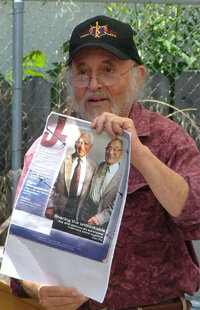 In 1972, while teaching at Fresno State, I listened to the internment story of my graduate assistant and friend Sam Masumoto and his family, who gave me a copy of Boswell’s book America’s Concentration Camps. I continued to learn about the internment and in 2000, as a San Jose State University journalism professor, I introduced a class entitled “How the American Media Covered the Japanese American Internment and the Holocaust during World War Two.” Holocaust survivors came in and told their stories to the class as did former Japanese American internees including Jimi and Eiko Yamaichi, Katsumi and Alice Hikido, and author Jeanne Houston. Each semester, several former internees volunteered to be interviewed in their homes by only two to three students at a time, allowing living history to be told and passed on.
In 1972, while teaching at Fresno State, I listened to the internment story of my graduate assistant and friend Sam Masumoto and his family, who gave me a copy of Boswell’s book America’s Concentration Camps. I continued to learn about the internment and in 2000, as a San Jose State University journalism professor, I introduced a class entitled “How the American Media Covered the Japanese American Internment and the Holocaust during World War Two.” Holocaust survivors came in and told their stories to the class as did former Japanese American internees including Jimi and Eiko Yamaichi, Katsumi and Alice Hikido, and author Jeanne Houston. Each semester, several former internees volunteered to be interviewed in their homes by only two to three students at a time, allowing living history to be told and passed on. I became friends with many former internees and Holocaust survivors, saw the serendipitous relationship between members of both groups and noted that they had much in common. The commonality includes strong family ties, high moral values, contributions to the community, and working in their own way to help ensure that the wrongs that befell them do not happen again. Many from each group regularly speak to students in classrooms to provide living history experiences, to educate the young about the past, and to instill in them what they can do to make the world a better place to live in.Both groups suffered gross injustices during World War Two, and I thought that it would be an exceptionally stimulating experience for members of each group to get together at a Gathering of Friends. In 2005 they shared lunch and sat together and talked about their experiences before, during and since the war ended. It was a time to share and not to compare, and it had a most successful beginning at the Japanese American Museum, followed by a 2008 Gathering at the Chai House in San Jose, and now the Third Gathering of Friends at JAMsj has added to the understanding and the friendships.Harvey Gotliffe’s writings can be found on his blog at http://theho-ho-kuscogitator.blogspot.com/ and on the Huffington Post at http://www.huffingtonpost.com/harvey-gotliffe-phd/
I became friends with many former internees and Holocaust survivors, saw the serendipitous relationship between members of both groups and noted that they had much in common. The commonality includes strong family ties, high moral values, contributions to the community, and working in their own way to help ensure that the wrongs that befell them do not happen again. Many from each group regularly speak to students in classrooms to provide living history experiences, to educate the young about the past, and to instill in them what they can do to make the world a better place to live in.Both groups suffered gross injustices during World War Two, and I thought that it would be an exceptionally stimulating experience for members of each group to get together at a Gathering of Friends. In 2005 they shared lunch and sat together and talked about their experiences before, during and since the war ended. It was a time to share and not to compare, and it had a most successful beginning at the Japanese American Museum, followed by a 2008 Gathering at the Chai House in San Jose, and now the Third Gathering of Friends at JAMsj has added to the understanding and the friendships.Harvey Gotliffe’s writings can be found on his blog at http://theho-ho-kuscogitator.blogspot.com/ and on the Huffington Post at http://www.huffingtonpost.com/harvey-gotliffe-phd/
We Will Never Forget You
Former Japanese American internees and Holocaust survivors exchanged personal stories related to their incarceration at the Gathering of Friends event that took place on June 12. As part of the program, JAMsj board member, Will Kaku, spoke about the responsibility that the next generation has in continuing the legacy of the former internees and of the Holocaust survivors. The following is an excerpt from his speech.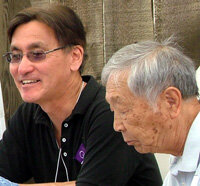 As a museum docent, I see local students come to this museum to simply check off their requirement for their history class. To some of them, this really is just "history.”To them, your history is a grainy black and white image on our wall that depicts a distant event from some seventy or eighty years ago. For some, that may even be before their own grandmothers or grandfathers were born. Many of them simply do not see the relevance of this history and they cannot see how your story relates to their lives. And I have fears.I fear that with each passing generation, with each passing day, another first-person account is gone, another courageous voice is silenced, and the connections to your legacy are much more distant.Thus, it is imperative for my generation to pass down your history and importantly, to show people how your stories are relevant to their lives today.
As a museum docent, I see local students come to this museum to simply check off their requirement for their history class. To some of them, this really is just "history.”To them, your history is a grainy black and white image on our wall that depicts a distant event from some seventy or eighty years ago. For some, that may even be before their own grandmothers or grandfathers were born. Many of them simply do not see the relevance of this history and they cannot see how your story relates to their lives. And I have fears.I fear that with each passing generation, with each passing day, another first-person account is gone, another courageous voice is silenced, and the connections to your legacy are much more distant.Thus, it is imperative for my generation to pass down your history and importantly, to show people how your stories are relevant to their lives today.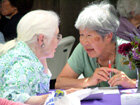 The story of Japanese Americans is an American story. It is ultimately a story about identity and it is a story about all of us. It is a story that challenges us with the whole concept of what it means to be an American; what it means to be questioned about your loyalty; and what it means to have your rights taken away during wartime. It is an issue that is pertinent to us today as we fight two wars and debate whether we should limit the civil liberties of fellow Americans and whether we should put them under special scrutiny and suspicion based on their religious and ethnic background.The story of the Holocaust is a story that challenges us about our own humanity. When we speak about the Holocaust, we boldly proclaim "Never Again.” Yet, some say that those words ring hollow, as it in fact happens again and again. Cambodia, Darfur, Rwanda, Srebrenica. We also have the audacity to label which act of genocide is more abhorrent than the other based on the color of their skin or how close the victims are to American and European sentiments or interests.It is only through your courageous stories that we can truly learn about the commonality of human experience and human suffering.The job of the next generation is to preserve and tell your stories about the human condition, and importantly, to contextual your stories so that people can see that your stories are just as relevant today. This is the role of my generation and I cherish that responsibility. I look forward to the day when we can truly say "Never Again" and those words will finally have meaning.I would like to thank all of you for your courage in sharing your stories with us today. I pledge that we will honor your legacy, uphold your courage, and carry your convictions in our hearts. We will never forget you.Contact: will@jamsj.org
The story of Japanese Americans is an American story. It is ultimately a story about identity and it is a story about all of us. It is a story that challenges us with the whole concept of what it means to be an American; what it means to be questioned about your loyalty; and what it means to have your rights taken away during wartime. It is an issue that is pertinent to us today as we fight two wars and debate whether we should limit the civil liberties of fellow Americans and whether we should put them under special scrutiny and suspicion based on their religious and ethnic background.The story of the Holocaust is a story that challenges us about our own humanity. When we speak about the Holocaust, we boldly proclaim "Never Again.” Yet, some say that those words ring hollow, as it in fact happens again and again. Cambodia, Darfur, Rwanda, Srebrenica. We also have the audacity to label which act of genocide is more abhorrent than the other based on the color of their skin or how close the victims are to American and European sentiments or interests.It is only through your courageous stories that we can truly learn about the commonality of human experience and human suffering.The job of the next generation is to preserve and tell your stories about the human condition, and importantly, to contextual your stories so that people can see that your stories are just as relevant today. This is the role of my generation and I cherish that responsibility. I look forward to the day when we can truly say "Never Again" and those words will finally have meaning.I would like to thank all of you for your courage in sharing your stories with us today. I pledge that we will honor your legacy, uphold your courage, and carry your convictions in our hearts. We will never forget you.Contact: will@jamsj.org
Japanese History: In Salinas Chinatown
By Mae Sakasegawa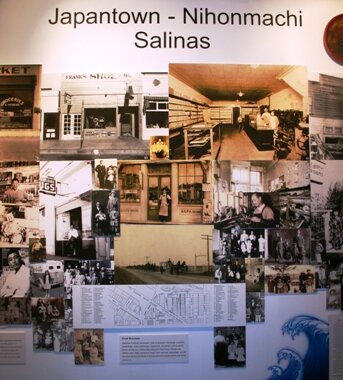 It has been a privilege and pleasure for Fran Schwann and me to be guest curators of this special exhibition. We also worked closely with Deborah Silguero, curator of the National Steinbeck Center.Through this exhibition, Salinas' Chinatown history continues to be told from the perspective of the Japanese community, as related in the accounts of its members. The exhibition covers the period starting from the late 19th century, when the first Japanese immigrants came to work in the local sugar beet fields, and follows their progress in building a cohesive community through their hard work and perseverance. As you walk through the exhibition, you will get a genuine feel for the vibrant community that once was.From the artifacts and photographs, we have woven a story where you can see the Japanese community grow and start to prosper. You will get a sense that the families were starting to enjoy the fruits of their hard work. And you will learn of the Isseis' determination to make a better life for their children.Their journey took an abrupt turn with the signing of Executive Order 9066 on February 19, 1942, when all Japanese citizens and legal aliens were ordered to evacuate California, Oregon, Washington, and southern Arizona, and sent to concentration camps located in remote areas of the United States. Everything that was carefully built up was suddenly taken away.In a few days Salinas' Japantown simply disappeared. Initially, all were incarcerated in the barracks at the Salinas Assembly Center (rodeo grounds). Then in July, they were moved to Poston, Arizona. To leave the mild climate of Salinas for the Arizona desert, where temperatures exceeded 100 degrees, was unbearable. Salt pills and wet towels were passed out to some of the bewildered internees. Many fainted from the extreme heat. Everyone wondered what would become of them in the middle of this desert.
It has been a privilege and pleasure for Fran Schwann and me to be guest curators of this special exhibition. We also worked closely with Deborah Silguero, curator of the National Steinbeck Center.Through this exhibition, Salinas' Chinatown history continues to be told from the perspective of the Japanese community, as related in the accounts of its members. The exhibition covers the period starting from the late 19th century, when the first Japanese immigrants came to work in the local sugar beet fields, and follows their progress in building a cohesive community through their hard work and perseverance. As you walk through the exhibition, you will get a genuine feel for the vibrant community that once was.From the artifacts and photographs, we have woven a story where you can see the Japanese community grow and start to prosper. You will get a sense that the families were starting to enjoy the fruits of their hard work. And you will learn of the Isseis' determination to make a better life for their children.Their journey took an abrupt turn with the signing of Executive Order 9066 on February 19, 1942, when all Japanese citizens and legal aliens were ordered to evacuate California, Oregon, Washington, and southern Arizona, and sent to concentration camps located in remote areas of the United States. Everything that was carefully built up was suddenly taken away.In a few days Salinas' Japantown simply disappeared. Initially, all were incarcerated in the barracks at the Salinas Assembly Center (rodeo grounds). Then in July, they were moved to Poston, Arizona. To leave the mild climate of Salinas for the Arizona desert, where temperatures exceeded 100 degrees, was unbearable. Salt pills and wet towels were passed out to some of the bewildered internees. Many fainted from the extreme heat. Everyone wondered what would become of them in the middle of this desert.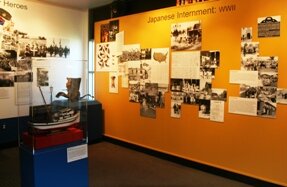 The exhibition takes you on an emotional journey through Camp 2 in Poston, Arizona. It also depicts the ordeals of the 442nd Combat Regiment, the 100th Battalion, and the Military Intelligence Service (MIS), whose members served their country valiantly while their families were incarcerated. We have also incorporated video interviews of internees, presented by students at CSU Monterey Bay.We are pleased that visitors are giving good reviews to this exhibit. Many have said that it gives them an understanding of how the Issei and the Nisei overcame their hardship through their determination and grit.The exhibit also offers a glimpse of Salinas' Nihonmachi and the community that disappeared.--------------------------------------------------------------------The National Steinbeck Center is located at One Main Street, Salinas, CA 93901. The exhibition, Japanese History: In Salinas Chinatown runs until July 17, 2011.
The exhibition takes you on an emotional journey through Camp 2 in Poston, Arizona. It also depicts the ordeals of the 442nd Combat Regiment, the 100th Battalion, and the Military Intelligence Service (MIS), whose members served their country valiantly while their families were incarcerated. We have also incorporated video interviews of internees, presented by students at CSU Monterey Bay.We are pleased that visitors are giving good reviews to this exhibit. Many have said that it gives them an understanding of how the Issei and the Nisei overcame their hardship through their determination and grit.The exhibit also offers a glimpse of Salinas' Nihonmachi and the community that disappeared.--------------------------------------------------------------------The National Steinbeck Center is located at One Main Street, Salinas, CA 93901. The exhibition, Japanese History: In Salinas Chinatown runs until July 17, 2011.
Kodomo No Hi: JAMsj Celebrates the Beauty of Childhood
By Sarah Gabot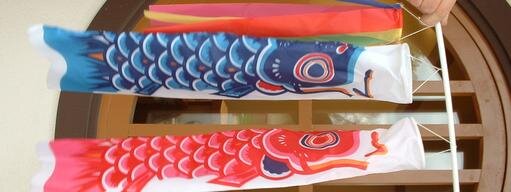 Brightly dyed carp streamers will soon be fluttering above houses in Japan and many Japanese American homes.Kodomo No Hi, otherwise known as Children's Day, is a nationally observed holiday in Japan, traditionally celebrated on May 5.JAMsj will be celebrating Kodomo No Hi on Sunday, May 1, with kabuto (samurai helmets), koinobori (carp streamers), and origami making in the museum parking lot for the annual Nikkei Matsuri Festival.May 5 was previously recognized as Boys' Day in honor of male children but was changed to Children's Day after World War II. However, the celebration of Children's Day still maintains some of the traditions of Boys' Day.On this day, many families honor youthfulness. Children in Japan frequently do arts and craft projects in school, creating kabuto and koinobori, representing strength and determination. Children also eat rice cakes wrapped in oak leaves, symbolizing strength.Koinobori are cloth fish wind streamers that are flown outside of the home, wishing good luck to the family’s children. Carp are revered for their energy and resilience for swimming upstream and overcoming obstacles.
Brightly dyed carp streamers will soon be fluttering above houses in Japan and many Japanese American homes.Kodomo No Hi, otherwise known as Children's Day, is a nationally observed holiday in Japan, traditionally celebrated on May 5.JAMsj will be celebrating Kodomo No Hi on Sunday, May 1, with kabuto (samurai helmets), koinobori (carp streamers), and origami making in the museum parking lot for the annual Nikkei Matsuri Festival.May 5 was previously recognized as Boys' Day in honor of male children but was changed to Children's Day after World War II. However, the celebration of Children's Day still maintains some of the traditions of Boys' Day.On this day, many families honor youthfulness. Children in Japan frequently do arts and craft projects in school, creating kabuto and koinobori, representing strength and determination. Children also eat rice cakes wrapped in oak leaves, symbolizing strength.Koinobori are cloth fish wind streamers that are flown outside of the home, wishing good luck to the family’s children. Carp are revered for their energy and resilience for swimming upstream and overcoming obstacles. Often times, there will be a “family” of fish hung together. The wind blowing through the streamers makes the fish look as if they were swimming. The largest koinobori is black, representing the father. The pink or red fish represents the mother. Green or blue koinobori represent the boys in the family.Koinobori making in school for a child in Japan is as common as American children decorating a tree during Christmas.“I remember making the fish from scratch. Coloring them was a lot of fun,” said Mika Frost, a local Japanese American, who spent most of her childhood in Japan. “When I see people hanging them on their houses, there’s an instant nostalgic feeling. It’s a warm fuzzy feeling.”Mika, also a former English teacher in Japan, reflects on the values she learned from her memories about Children’s Day, “Be strong, be honest, and be good. The big message is that being a child is a beautiful thing.”-------------------------------------------------------------For information about the Children's Day Celebration at JAMsj, click here.For information about the San Jose Nikkei Matsuri Festival, click here.
Often times, there will be a “family” of fish hung together. The wind blowing through the streamers makes the fish look as if they were swimming. The largest koinobori is black, representing the father. The pink or red fish represents the mother. Green or blue koinobori represent the boys in the family.Koinobori making in school for a child in Japan is as common as American children decorating a tree during Christmas.“I remember making the fish from scratch. Coloring them was a lot of fun,” said Mika Frost, a local Japanese American, who spent most of her childhood in Japan. “When I see people hanging them on their houses, there’s an instant nostalgic feeling. It’s a warm fuzzy feeling.”Mika, also a former English teacher in Japan, reflects on the values she learned from her memories about Children’s Day, “Be strong, be honest, and be good. The big message is that being a child is a beautiful thing.”-------------------------------------------------------------For information about the Children's Day Celebration at JAMsj, click here.For information about the San Jose Nikkei Matsuri Festival, click here.
JAMsj Docent Spotlight: Rich Saito
By Will Kaku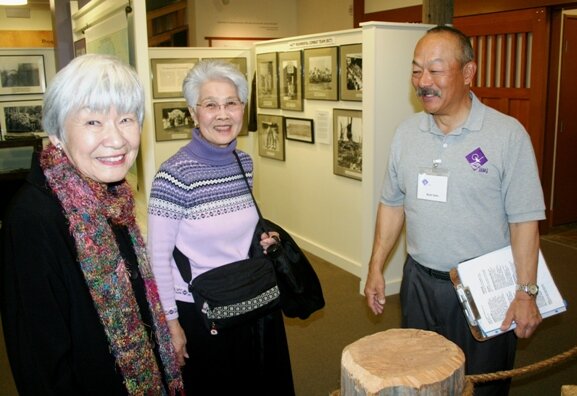 Although some JAMsj docents have advanced degrees in education or in Asian American Studies, a large majority of them do not. Coming from many diverse life experiences and ethnic backgrounds, these JAMsj docents enrich the museum visitor’s experience by incorporating their own personal insights into their roles as historical interpreters. The volunteer docents are trained to provide a visitor experience that is both educational and entertaining.Rich Saito is a former San Jose police officer who recently signed on to be a JAMsj docent. “When I learned the new museum facility was opening and seeking volunteers, I wanted to get involved,” Saito said. “I wanted to get involved for three reasons: I wanted to serve the community by contributing to the sense of community, I wanted to learn about our community's history, and I wanted to preserve Japantown as a cohesive Japanese American community for future generations.”Rich loves the highly interactive exchanges with museum visitors that are encouraged by the JAMsj docent training workshops. “I love learning with people,” Saito stated. “I try to learn something from everyone who comes into the museum. As a docent, I try to create a sharing relationship with others where we exchange not only facts, but also emotions and perspectives about the Japanese American experience. Sharing knowledge is very rewarding.”Rich remembers giving a museum tour in February to former San Jose mayor Susan Hammer. He recalled, “She told me that Norm Mineta's former insurance business and home, located next to JAMsj, were preserved by George Starbird, a former mayor (Mineta is a former commerce and transportation secretary, congressman , and mayor of San Jose). I also learned about an attorney named JB Peckham, who had numerous properties deeded to him so he could preserve them for the internees while they were in camp.”Although Rich was already a highly respected San Jose police man, he felt that he still needed to give back to the community where he was raised. “I have always felt a wonderful sense of community in Japantown,” Saito remarked. “My family moved here from Oakland in 1961 when my dad, David Saito, was transferred to the new San Jose branch of Sumitomo Bank on First Street.” After graduating from San Jose State University, Saito joined the San Jose police force and retired in 2006 after thirty years of service.“I've been involved with Japantown my whole life, attending Wesley Methodist Church; working at community events such as the San Jose Obon Festival; overseeing traffic control for the Japantown Run; and providing security for the Nikkei Matsuri, Aki Matsuri, and the San Jose Day of Remembrance events.”Rich is pleased that JAMsj gives an opportunity for all volunteers to provide feedback on the direction of the museum. “I've been able to offer suggestions about changes to the museum, including a display about the people who helped the Japanese Americans during WWII,” he said.Summing up his experience as a docent and reflecting on JAMsj’s value to the community, he concludes, “As a docent, we have the ability to contribute to the growth of the museum. We have so much to be proud of, and this special place collects these experiences.”
Although some JAMsj docents have advanced degrees in education or in Asian American Studies, a large majority of them do not. Coming from many diverse life experiences and ethnic backgrounds, these JAMsj docents enrich the museum visitor’s experience by incorporating their own personal insights into their roles as historical interpreters. The volunteer docents are trained to provide a visitor experience that is both educational and entertaining.Rich Saito is a former San Jose police officer who recently signed on to be a JAMsj docent. “When I learned the new museum facility was opening and seeking volunteers, I wanted to get involved,” Saito said. “I wanted to get involved for three reasons: I wanted to serve the community by contributing to the sense of community, I wanted to learn about our community's history, and I wanted to preserve Japantown as a cohesive Japanese American community for future generations.”Rich loves the highly interactive exchanges with museum visitors that are encouraged by the JAMsj docent training workshops. “I love learning with people,” Saito stated. “I try to learn something from everyone who comes into the museum. As a docent, I try to create a sharing relationship with others where we exchange not only facts, but also emotions and perspectives about the Japanese American experience. Sharing knowledge is very rewarding.”Rich remembers giving a museum tour in February to former San Jose mayor Susan Hammer. He recalled, “She told me that Norm Mineta's former insurance business and home, located next to JAMsj, were preserved by George Starbird, a former mayor (Mineta is a former commerce and transportation secretary, congressman , and mayor of San Jose). I also learned about an attorney named JB Peckham, who had numerous properties deeded to him so he could preserve them for the internees while they were in camp.”Although Rich was already a highly respected San Jose police man, he felt that he still needed to give back to the community where he was raised. “I have always felt a wonderful sense of community in Japantown,” Saito remarked. “My family moved here from Oakland in 1961 when my dad, David Saito, was transferred to the new San Jose branch of Sumitomo Bank on First Street.” After graduating from San Jose State University, Saito joined the San Jose police force and retired in 2006 after thirty years of service.“I've been involved with Japantown my whole life, attending Wesley Methodist Church; working at community events such as the San Jose Obon Festival; overseeing traffic control for the Japantown Run; and providing security for the Nikkei Matsuri, Aki Matsuri, and the San Jose Day of Remembrance events.”Rich is pleased that JAMsj gives an opportunity for all volunteers to provide feedback on the direction of the museum. “I've been able to offer suggestions about changes to the museum, including a display about the people who helped the Japanese Americans during WWII,” he said.Summing up his experience as a docent and reflecting on JAMsj’s value to the community, he concludes, “As a docent, we have the ability to contribute to the growth of the museum. We have so much to be proud of, and this special place collects these experiences.”
The Roar of Silence: Poems on the Legacy of the Japanese American Internment Experience
By Patricia J. MachmillerOpen PassagePoems by Ann MutoJapanese American Museum of San Jose
Our parents hidTheir history from usThey swallowedTheir painThey didn't want us to lose our wayIn bitterness or anger-from "Questions"
 Ann Muto was born in the internment camp of Poston, Arizona in 1944. In her book of poems, Open Passage, she explores the experience of being a child of internees—the legacy of the sad and shameful time when the United States interned thousands of Japanese Americans throughout the American West. In her poems Muto tries to come to terms with the effects that traumatized her parents, an experience about which they never spoke, but which forever changed them, and in the process, was handed down to their children in vague, yet tangible, forms.
Ann Muto was born in the internment camp of Poston, Arizona in 1944. In her book of poems, Open Passage, she explores the experience of being a child of internees—the legacy of the sad and shameful time when the United States interned thousands of Japanese Americans throughout the American West. In her poems Muto tries to come to terms with the effects that traumatized her parents, an experience about which they never spoke, but which forever changed them, and in the process, was handed down to their children in vague, yet tangible, forms.
My sorrow is that we never talked:How it was for her,How it was for me.- from "Regret"
As an adult coming to the knowledge of the internment camps, Muto tries to reach through the wall of silence by imagining her mother’s experience:
Repetitive rows of barracks engulfedMy mother’s view.Swirling sand stifled her breath.
Pride spiraled into shameShe hated who she was, what she was—Hers, the face of the enemy.- from “Lost in the Desert”
Her poems expand to incorporate Muto’s own passions, a love of the outdoors and the natural world.
Torrents of waterThundering thousands of feetRumble into the day,The roar a room around me.- from “Yosemite Falls”
In her writing her exploration of the natural world parallels her exploration of the interior life—that of her parents and her own, and in a startling way the one becomes a metaphor for the other. One can imagine being immersed in the roar of the Yosemite Falls in contrast to the feeling of being surrounded by the silence of her parents. Or could it be a similar experience? In “Yosemite Aberration” she examines the past practices of tourists and park officials in their dealings with bears. She addresses the bear with this admission of human fallibility:
Our myopic ignoranceSeduced you to seekTasty tidbits in cars and cabinsForced us to relocate you . . .
Muto’s parents succeeded in their efforts to keep her free of “bitterness or anger.” In these poems Muto shows us her struggle to comprehend her parents’ history and her own, shares with us her confusion and sense of bewilderment, and offers some of the insights she has gained on this journey into the past.
We learn to releaseWorn-out wishesAnd listen forThe rhythm of our souls.- from “Dance of Life”
------------------------------------------------------------Patricia Machmiller received the “Best Memoir” for 2010 by the Bay Area Independent Publishers’ Association for her book Autumn Loneliness: The Letters of Kiyoshi & Kiyoko Tokutomi in 2010.
Jimi Yamaichi speaks at the San Jose Day of Remembrance
By Sarah Gabot JAMsj director and curator, Jimi Yamaichi, a pioneer against Asian American discrimination and a hero to several local communities, will be the remembrance speaker at the 31st Annual San Jose Day of Remembrance event. The 2011 Day of Remembrance event, titled “Fighting Against Fear,” commemorates the signing of Executive Order 9066 which led to the incarceration of 120,000 people of Japanese descent during WWII.Yamaichi will address his experiences of struggle and protest during a time when America was less tolerant of Asians, especially Japanese, in America. His speech will touch upon his experience in the Heart Mountain and Tule Lake internment camps as well as America’s "historical fear of people who look like the enemy.”
JAMsj director and curator, Jimi Yamaichi, a pioneer against Asian American discrimination and a hero to several local communities, will be the remembrance speaker at the 31st Annual San Jose Day of Remembrance event. The 2011 Day of Remembrance event, titled “Fighting Against Fear,” commemorates the signing of Executive Order 9066 which led to the incarceration of 120,000 people of Japanese descent during WWII.Yamaichi will address his experiences of struggle and protest during a time when America was less tolerant of Asians, especially Japanese, in America. His speech will touch upon his experience in the Heart Mountain and Tule Lake internment camps as well as America’s "historical fear of people who look like the enemy.”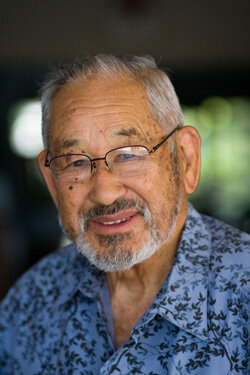 In his camp days, Yamaichi protested against the injustice that was felt by many Japanese Americans. Yamaichi insists that sharing his experience during these times is for everyone to learn from. Yamaichi said, “This is an American story, not just a Japanese American story.”“When I became 21, I tried to register to vote,” Yamaichi recalled, “but they refused and wouldn’t let me.” Yamaichi also saw the humiliation that his older brother, Shigeru, endured while Shigeru was serving in the armed forces. “They took away his rifle, “ Yamaichi said, “ and when Franklin Roosevelt visited Fort Riley, they separated all of the Japanese American soldiers and held them under armed guard so that they were not to be seen.”Yamaichi was angry that he and others were deprived of their constitutional rights and that his brother suffered great indignities while serving his country. These strong emotions compelled him to become a draft resister.Unlike what happened at the other camps, the Tule Lake resisters were the only ones who were not fined or jailed. Judge Louis E. Goodman dismissed the charges against the resisters, saying “It is shocking to the conscience that an American citizen be confined on the ground of disloyalty and then, while under duress and restraint, be compelled to serve in the Armed Forces or prosecuted for not yielding to such compulsion.”"The judge was worried about the community's reaction to his decision," Yamaichi recalled. "He kept the car running and took off as soon as he issued his ruling."Yamaichi also recalled the resettlement period after internment, a time of prejudice and animosity towards Japanese Americans. Yamaichi walked into the union office near Japantown San Jose and asked for a union card.
In his camp days, Yamaichi protested against the injustice that was felt by many Japanese Americans. Yamaichi insists that sharing his experience during these times is for everyone to learn from. Yamaichi said, “This is an American story, not just a Japanese American story.”“When I became 21, I tried to register to vote,” Yamaichi recalled, “but they refused and wouldn’t let me.” Yamaichi also saw the humiliation that his older brother, Shigeru, endured while Shigeru was serving in the armed forces. “They took away his rifle, “ Yamaichi said, “ and when Franklin Roosevelt visited Fort Riley, they separated all of the Japanese American soldiers and held them under armed guard so that they were not to be seen.”Yamaichi was angry that he and others were deprived of their constitutional rights and that his brother suffered great indignities while serving his country. These strong emotions compelled him to become a draft resister.Unlike what happened at the other camps, the Tule Lake resisters were the only ones who were not fined or jailed. Judge Louis E. Goodman dismissed the charges against the resisters, saying “It is shocking to the conscience that an American citizen be confined on the ground of disloyalty and then, while under duress and restraint, be compelled to serve in the Armed Forces or prosecuted for not yielding to such compulsion.”"The judge was worried about the community's reaction to his decision," Yamaichi recalled. "He kept the car running and took off as soon as he issued his ruling."Yamaichi also recalled the resettlement period after internment, a time of prejudice and animosity towards Japanese Americans. Yamaichi walked into the union office near Japantown San Jose and asked for a union card.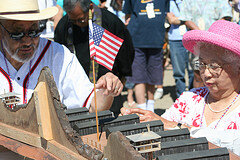 The man behind the front desk scoffed at the thought of giving an Asian a chance to join the union, and even worse, a “Jap.” He turned Yamaichi away without hesitance.Unwilling to give in, Yamaichi made himself a familiar, relentless face to the union office. He was turned away every time. “I went every week,” he said, “he told me to get out.” Eventually Yamaichi's persistence paid off and he became the first Asian American to join the local union.Yamaichi was the first Asian American to break down the union’s barriers, carving a path for Asian Americans everywhere to receive equal opportunities in the workforce.Yamaichi, now 88 years old, is still on the forefront of fighting prejudice and discrimination for all minorities. Soon after the September 11 attacks, Yamaichi was one of the first in his community to reach out to Muslim Americans. Yamaichi felt compelled to build bridges between the communities. He showed compassion and strength for the Muslim community in a time when people lived in fear and failed to support them.
The man behind the front desk scoffed at the thought of giving an Asian a chance to join the union, and even worse, a “Jap.” He turned Yamaichi away without hesitance.Unwilling to give in, Yamaichi made himself a familiar, relentless face to the union office. He was turned away every time. “I went every week,” he said, “he told me to get out.” Eventually Yamaichi's persistence paid off and he became the first Asian American to join the local union.Yamaichi was the first Asian American to break down the union’s barriers, carving a path for Asian Americans everywhere to receive equal opportunities in the workforce.Yamaichi, now 88 years old, is still on the forefront of fighting prejudice and discrimination for all minorities. Soon after the September 11 attacks, Yamaichi was one of the first in his community to reach out to Muslim Americans. Yamaichi felt compelled to build bridges between the communities. He showed compassion and strength for the Muslim community in a time when people lived in fear and failed to support them.
----------------------------------------
The Day of Remembrance is an annual event by the Nihonmachi Outreach Committee, a progressive organization in the Japanese American community dedicated to educating the public about the incarceration of Japanese Americans during WWII, and is committed to defending all people on issues of civil rights, equality, justice, tolerance and peace.The Day of Remembrance 2011 will be held on February 20, 2011 at San Jose Buddhist Church Betsuin, 640 North 5th Street, San Jose, CA 95112 starting at 5:30pm.
San Jose Day of Remembrance: Fighting Against Fear
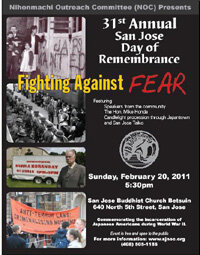 By Will KakuThe 31st Annual San Jose Day of Remembrance will take place on February 20, 2011 in the San Jose Buddhist Church Betsuin.The annual event commemorates the signing of Executive Order 9066 on February 19, 1942 which eventually led to the incarceration of 120,000 people of Japanese descent, two-thirds of whom were American citizens.The theme for the 2011 San Jose Day of Remembrance is "Fighting Against Fear," reflecting the feeling that over the past year, many highly controversial events stirred up strong emotions, hysteria and fear that prevented serious discussions, intellectual debate and sensible policy.The "mosque near ground zero," the California Proposition 8 courtbattles, calls for racial profiling at airports, threats of Koran burning events and the rising tension between the Department of Justice and Muslim American civil rights organizations created a highly-charged atmosphere that some would say had parallels with the experience of Japanese Americans.
By Will KakuThe 31st Annual San Jose Day of Remembrance will take place on February 20, 2011 in the San Jose Buddhist Church Betsuin.The annual event commemorates the signing of Executive Order 9066 on February 19, 1942 which eventually led to the incarceration of 120,000 people of Japanese descent, two-thirds of whom were American citizens.The theme for the 2011 San Jose Day of Remembrance is "Fighting Against Fear," reflecting the feeling that over the past year, many highly controversial events stirred up strong emotions, hysteria and fear that prevented serious discussions, intellectual debate and sensible policy.The "mosque near ground zero," the California Proposition 8 courtbattles, calls for racial profiling at airports, threats of Koran burning events and the rising tension between the Department of Justice and Muslim American civil rights organizations created a highly-charged atmosphere that some would say had parallels with the experience of Japanese Americans.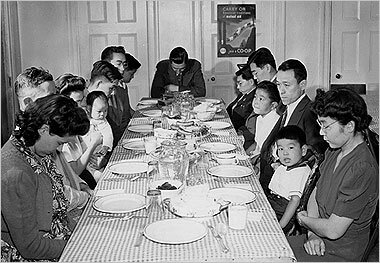 For example, the "mosque near ground zero" debate made some people in the Japanese American community recall the events surrounding the establishment of a Japanese American hostel in New York City. In April 1944, the American Baptist Home Mission Society and the Church of the Brethren announced that a hostel would be opened that would house Japanese American internees who were granted permission to leave the internment camps if they met a particular criteria.The establishment of the hostel met opposition from the local community and a strong protest from Mayor La Guardia. La Guardia argued, "If it was necessary to evacuate them from their homes originally and put them in a concentration camp, what justification is there for turning them loose in Eastern cities at this time?"The Japanese American hostel was supported by several organizations, religous groups, the faculty of Columbia's School of Social Work, and Secretary of the Interior, Harold Ickes. Ickes stated that La Guaria's position would "seem ominously out of tune in a nation that is fighting for the principles of democracy and freedom."In May of 1944, the hostel was opened and eventually tensions subsided. It has been estimated that approximately 2000 Japanese American internees had settled around the New York City area by the end of the war.For information about the 2011 San Jose Day of Remembrance, visit www.sjnoc.org.
For example, the "mosque near ground zero" debate made some people in the Japanese American community recall the events surrounding the establishment of a Japanese American hostel in New York City. In April 1944, the American Baptist Home Mission Society and the Church of the Brethren announced that a hostel would be opened that would house Japanese American internees who were granted permission to leave the internment camps if they met a particular criteria.The establishment of the hostel met opposition from the local community and a strong protest from Mayor La Guardia. La Guardia argued, "If it was necessary to evacuate them from their homes originally and put them in a concentration camp, what justification is there for turning them loose in Eastern cities at this time?"The Japanese American hostel was supported by several organizations, religous groups, the faculty of Columbia's School of Social Work, and Secretary of the Interior, Harold Ickes. Ickes stated that La Guaria's position would "seem ominously out of tune in a nation that is fighting for the principles of democracy and freedom."In May of 1944, the hostel was opened and eventually tensions subsided. It has been estimated that approximately 2000 Japanese American internees had settled around the New York City area by the end of the war.For information about the 2011 San Jose Day of Remembrance, visit www.sjnoc.org.







